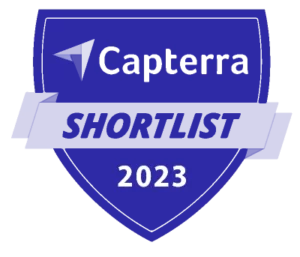Vacation rentals have garnered an impressive amount of attention and market share over the past few years from travel consumers, entrepreneurs, and investors alike. The vacation rental market is no longer the “mom and pop” of the hospitality industry; it has matured to a fully-fledged and technologically-savvy sector.
Many newcomers to the vacation rental industry believe that a good home in a major city is required to see any income. Although this helps, there are way more opportunities for vacation rental hosts in secondary and tertiary markets than ever before. It’s all about how you market your vacation rental.
As Airbnb pushes 3 million listings worldwide, and the short-term rental industry is expected to be worth $170 billion by 2019, vacation rental marketing is more important to hosts like you than ever before. In this article, we will be going over everything that we, and the experts, know about vacation rental marketing to help you run a successful vacation rental business.
Vacation Rental Marketing 101
Narrow in on your ideal guests
Before you begin creating your vacation rental marketing plan, you should first define your target audience. Some great options for your ideal guest include:
- Families
- Large groups
- Millennials
- Business travelers
Much of this decision will depend on the type of property you own and your location. For instance, a condo in the downtown core of a major city will attract a different type of guest than a single-family home near Disney, Orlando. Your vacation rental marketing plan should clearly articulate who your ideal client is, and how you are going to market your property to them.
Improve the way you present vacation rental online
Use only high-quality photos
Unique and well-constructed photos are one of the best selling tools you can take advantage of for your vacation rental property. Unfortunately, if your rental listing doesn’t have either enough photos or they’re low-quality, people may not feel comfortable renting.
In fact, according to one study, potential guests are 20 percent more likely to book your property if you have at least 20 high-quality photos. This is a huge increase in revenue! Consider that the average Airbnb host earns $924 a month, or $11,088 a year. By increasing your income by 20 percent you would be earning an extra $2,217 a year.
It’s true that some vacation rental platforms limit the amount of photos you can include, which is why you should also have your own direct bookings website. But more on that later.
Given the income potential, we strongly suggest hiring a professional photographer to take dozens of high-quality photos of your rental. Given the direct relationship to your income, it’s worth the investment.
Optimize headlines
Headlines can make or break your vacation rental marketing strategy. You should optimize your headline to be powerful enough to make your viewers interested in the property, which will make them want to look at the listing, and ultimately book with you.
Here are a few tips to consider when writing your listing headline:
- Be clear about the type of listing – condo, villa, cottage, home, etc.
- Highlight a special amenity
- Focus on the type of traveler you are attracting – families, surfers, hikers, etc.
- Use words that tell of a unique aspect of your property
- You can also mention a major attraction that is close to you – e.g., near Disney
- Make sure it’s well written, without any grammatical mistakes
Improve your listing description
Critical to your vacation rental marketing plan is what you say about your property. The purpose of the headline is to get someone to view your listing, and the words you use in the listing to describe your property will bring in income. The point of your listing description is to take your traveler through a journey of what it’s like to stay in your home.
Using your words, paint a clear image of what it’s like to step through the front door. Most experts also suggest providing a description that’s at least 300 words long and includes a few details about the potential experience.
Ask for reviews
Travelers are 80 percent more likely to book a vacation rental that has reviews, according to Tripadvisor. Most travelers are worried that a rental property that either doesn’t have reviews or isn’t advertised well isn’t worth the risk. Reviews are social proof that most people seek out before booking a vacation rental property. So, you need them.
You must list your property on bookings sites with reviews, so that travelers can check and see how previous guests enjoyed their stay. The more reviews you get, the more likely travelers will want to book your rental property.
It’s also important for you to follow up with guests after a stay to ask for an honest review. Here’s a best practices guide for how to do that.
Create your own website and blog
The best way to improve, particularly if you have multiple listings, it to create your own bookings website. Even though your property is listed on HomeAway, VRBO, Airbnb, and others, you can’t guarantee your placement or search ranking.
You can take more ownership of your online presence by creating your own website for your vacation rental. This will give you more control over how you capture bookings, and how you reach customers. For vacation rental marketing, a website is critical to your success.
Vacation rental websites are easy to create, and can be a great place for people to check availability, amenities, photos, videos, and so much more. This can add an extra layer of credibility to your online presence.
You should also consider starting a blog to promote your rental. Using your blog, you can take advantage of content marketing, gain authority, improve your SEO (see below), and much more! There’s so much you can write about that will bring travelers to your city onto your website, and may ultimately lead to a booking.
Here is some examples of blog content you can add to improve the search ability of your vacation rental marketing bookings site:
- Top 5 experiences you have to do in CITY.
- The best family-friendly restaurants in CITY.
- 8 things to do in CITY that will cost you nothing.
- A weekend guide to CITY: 4 things you must see!
- CITY beach guide: Everything you need to know.
- 10 things you didn’t know, but should, about CITY.
And so on.
Once you’ve developed this content, you can start narrowing in on your Google search keyword strategy.
Make social media part of your vacation rental marketing plan
When we talk about social media, we mean LinkedIn, Facebook, Twitter, Instagram, Google+, Pinterest, YouTube, and others. Using social media in your vacation rental marketing means how we use these platforms to reach out to and engage with our current and future guests.
If you have social media accounts on Twitter and Facebook, you can promote relevant news about your city, promote your own blog content, and interact with travelers. It’s a great way to build grassroots interest in your brand and to stay on top of anything newsworthy in your city.
Consider the power of Search Engine Optimization (SEO)
Though many travelers will use listing sites like Airbnb to find a rental, much more will simply Google “vacation rentals in CITY.” If you want your vacation rental to be found in those searches, then you will need to learn how to use SEO (search engine optimization).
SEO plays a big role in vacation rental marketing, yet few companies know how to effectively use the tools out there to attract the right customers. Google crawls websites on the internet to find relevant content for its users, and it’s your responsibility to optimize your keywords to attract the right audience. If you create a website and blog with content that is relevant to those looking for a vacation rental in your city, Google will put you in the search results. Here are some practical tips for getting started:
Consider writing a blog article titled ‘Top family-friendly restaurants in CITY.’ If this is a good article, is well-written and researched, then Google will find it, and the next time someone searches ‘family-friendly restaurants in CITY,’ or simply ‘family-friendly restaurants’ because Google knows they’re in your city, then your website will likely show up. This is great free publicity!
Optimizing your website exposes your rentals to a larger audience, increases traffic to your site, and converts that traffic into more bookings. Learning SEO isn’t easy however, and even SEO agencies make mistakes in helping small businesses get specific about their audience and keywords. However, there are many resources to help you along the way.
What the experts say about vacation rental marketing
Cater to specific guest profiles – Rachel Tabellion, Head of Sales at HomeToGo
We’re seeing a shift in guest personas. Thanks in large part to more flexible work remote policies, everyone from families to solo travelers are booking longer stays and working remotely. Property managers can capitalize on this shift and drive more long-term stays by highlighting amenities that cater to these personas. Talk about the speed of the WiFi, the workspace at your property, and access to grocery stores or takeaway food to make a longer stay more comfortable.
If you’re targeting families, then think about what they want: board games, a grill, and a pool during the summer are obvious winners. These amenities and the location of your property should all be reflected through high-resolution images that will make your guests
excited to book.
Maximize Free Traffic Sources: List Your Company On Google My Business – Conrad O’Connell – BuildUp Bookings
Tips on email marketing from Betsy LaBarge – Mt Hood Vacation Rentals
Over the years and especially during the past five years I have seen a big difference in the marketing that vacation rental managers need to do to stay on top of their game and ahead of the competition. I have found the absolute best ROI to be email marketing. However, it has to be done right.
First, emails need to be very targeted and sent to specific segments of the contact list. The content (art, photos, graphics and ad copy) needs to be interesting and relevant to the group of contacts who will receive the email and it cannot be too long.
I have seen VR emails that are trying to say too much to too many people in one send. It is busy and most people will not scroll down to read everything anyway. For example, sending an email that talks about golf specials, ski specials and the best restaurants in the area is too much in one email.
The subject line needs to grab the recipient’s attention and make them want to scroll down and see more; it needs to say enough about the content of the email to not be ignored, but you cannot tell all in the email either. And there needs to be a specific call-to-action (Book Now, Learn More, Find the Perfect X, Y, or Z.) in the email.
I have personally found that the less salesy and more engaging and interesting an email is, the better response it gets. I think this might be a vacation rental thing; we are catering to leisure travelers who are planning a fun getaway.
I have a custom report in Google Analytics that tracks day of week and time of day for online bookings along with number of bookings and total revenue, so that I can send emails based upon those metrics. I also use my reservation software data along with my email marketing data to determine best days and times to send emails. This changes seasonally, so I check it monthly when planning my email sends.
Creating a well-rounded plan – Alex Husner – CMO at Condo World Resort Properties
While new ways to market vacation rentals seem to emerge on a daily basis, it’s important to develop a well-rounded vacation rental marketing strategy that includes a base of core revenue drivers (organic traffic, pay per click, email marketing etc) yet also allows for flexibility in your budget to try new outlets.
Promoting your company brand is perhaps the most strategic and impactful move you can make for the future of your business, as it will help you build repeat business and avoid becoming reliant on OTAs to reach new customers. If your website is effective (mobile and user-friendly), Google pay-per-click delivers an excellent ROI and allows you to drive demand where and when you need it most.
SEM/SEO should also be a foundation of your vacation rental marketing strategy, as this provides short and long-term benefits to build and sustain your bottom line – and your brand.
Getting the fundamentals right – Steve Vickers – Marketing Manager at Top Villas
My top tip for homeowners is to be open-minded. Working with the big rental sites can still make a lot of sense, but you shouldn’t be afraid to explore new marketing channels at the same time – consider building your own email list, and creating an account for your property on social media.
It goes without saying that you should also make sure that you have all of the fundamentals in place before you start marketing. That means great pictures, accurate rates and up-to-date availability calendars.
Run analytics with Steve Jarvis – Independent Cottages
For our vacation rental marketing we regularly run stats on what facilities travelers are searching for when visiting our site. Unsurprisingly off-road parking is number 1. But what continually surprises us is; A) the number of travelers searching for properties with cribs (or cots in the UK), and B) the number of properties that do not offer any.
Regarding the biggest ROI for our vacation rental marketing, we’ve found that simply providing a low-cost baby crib/cot and infant’s highchair significantly increases the visibility of a property on most advertising portals.
Become a link hound – Randy Bonds – Magnetic Strategy
Take every opportunity to get free inbound links to your website or property page. We see a lot of missed vacation rental marketing opportunities to obtain links from local businesses that would be happy to provide such if asked. Links are high on the list of ranking factors so taking advantage of links from relevant websites that cost nothing more than asking will create the highest ROI over time.
Consider paying for traffic – Tonya Harmati – Digital Marketing Manager at ICND
Although it may seem costly, a proper Pay Per Click (PPC) campaign that is optimized properly is crucial for any vacation rental marketing plan. Online Travel Agencies like HomeAway and Airbnb are dominating the front page of search results in Google in both paid and organic terms. So in order to drive traffic to your website and entice a guest to book directly with your company, you first have to get them there with targeted keywords that convert.
Of course, a conversion-driven, and easy-to-use website is key as well. Traffic is useless without the good user experience to get a potential guest to book.
Also, our biggest ROI has been email marketing. The cost to send emails is fairly cheap these days, and results in plenty of bookings if done correctly and all the elements are in place. Of course, email marketing needs to be consistent so guests expect it and wonder what your next big promotion is. Furthermore, make the emails exclusive, giving guests a reason to open on a regular basis.
Keep updating your listings – Andrea Lamond – Marketing Director at Owner Direct Vacation Rentals
We at Owner Direct Vacation Rentals have found that the most successful owners and property managers keep their property listings up to date with accurate rates and availability calendars, along with good property photos and a comprehensive description.
In fact, they even wrote a great a blog post about it here.
Use video – Andrew Chwalik
Vacation rentals are an exciting industry because people are actively looking for fun and beautiful locations to spend their free time. This means you get to create intriguing content that shows off your property in an engaging way. The best way to do that, with the biggest ROI, is through video.
Similar to the way the best real estate agents create video tours for their properties, vacation rental managers should be doing the same. Develop a small video tour, show people enjoying the scenery, express how they can take full advantage of their time off. You want to show people why they should be renting your space and not someone else’s. Don’t forget about live streaming options as well. Think about doing a live question and answer session at your location.
Having a video will absolutely differentiate you from the competition and allow you to engage with your target audience in a much more interactive manner.
Put your best image forward – Steve Patterson – CEO of Ur Home In Philly
For any successful vacation rental marketing plan you have to make sure you take excellent quality professional photographs. Be sure to use photo’s that are bright, with clean lines, and show the home’s best features. This will pay huge dividends, spending a few hundred dollars on professional photos, will make you thousands or even tens of thousands over the course of the time you own the property.
Hire someone, and before the photographer arrives make sure you accessorize the home, making sure there is no clutter in the home, the pictures on walls are straight, and remove or hide annoying looking electrical wires from TV’s or other electrical components. These will distract the eye from your beautiful home.
Boost Direct Bookings with Targeted Marketing – Patrick McDermott – Smooth.Rentals
Our data shows that marketing to niche travel audiences leads to a 413% increase in combined enquiries and bookings compared to broad holiday rental searches. Why? Because travellers with specific interests—like hiking, wellness retreats, or food experiences—are far more likely to book when they find a property that directly caters to their needs.For holiday rental owners with limited marketing budgets, this approach is even more important. Instead of spending on broad advertising, targeting the right guests ensures every pound works harder.By analyzing search data and booking trends, owners can discover what travelers are actively looking for. If demand for pet-friendly stays is rising, highlighting dog-friendly features and nearby walking trails will attract more bookings. If cycling holidays are trending, showcasing bike storage and scenic routes can make a property stand out.Once the right audience is identified, marketing should be focused and strategic. Optimizing your website, using social media to highlight key features, and sending tailored emails will drive more direct bookings. The data proves it—when marketing aligns with what guests want, the results follow.







